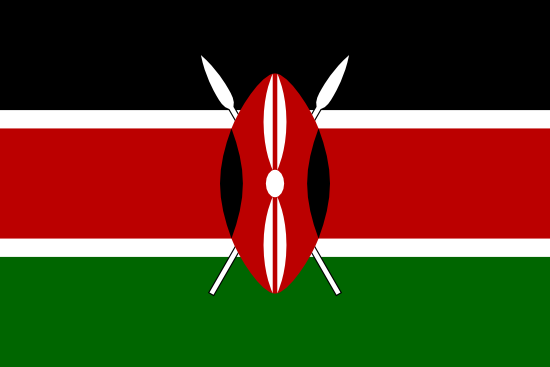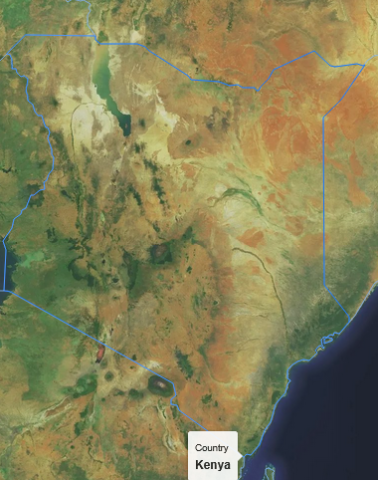Ecosystem Typology1
Global Ecosystem Typology (GET) is a system developed by the International Union for Conservation of Nature (IUCN) to classify ecosystems worldwide based on their ecological characteristics. It helps in understanding, conserving, and managing ecosystems by grouping them into different levels, from global biomes to specific local ecosystems.
Levels of Global Ecosystem Typology
- Realm – Broad divisions such as terrestrial, freshwater, and marine.
- Biome – Large-scale ecological zones like tropical forests, deserts, and grasslands.
- Functional Group – Ecosystems sharing key ecological processes.
- Ecosystem Type – Specific ecological communities with unique species and environmental conditions.
Examples of Ecosystem Typology in Kenya
-
Terrestrial Ecosystems
- Tropical and Subtropical Dry Forests (e.g., Arabuko Sokoke Forest)
- Savanna and Grasslands (e.g., Maasai Mara, Tsavo)
- Montane Forests (e.g., Mount Kenya, Aberdare Range)
- Desert and Semi-Desert Ecosystems (e.g., Chalbi Desert, Turkana)
-
Freshwater Ecosystems
- Rivers and Lakes (e.g., Lake Victoria, Lake Naivasha, Ewaso Nyiro River)
- Wetlands (e.g., Yala Swamp, Tana Delta, Lorian Swamp)
-
Marine Ecosystems
- Coral Reefs (e.g., Malindi and Watamu Marine National Parks)
- Mangrove Forests (e.g., Lamu, Mida Creek)
- Seagrass Beds (e.g., Diani-Chale Marine Reserve)
. Terrestrial Ecosystems
These are land-based ecosystems, classified based on climate, vegetation, and ecological functions.
A. Tropical and Subtropical Dry Forests
- Example: Arabuko Sokoke Forest (Kilifi County)
- Description: A unique coastal forest with endemic species like the golden-rumped elephant shrew and Sokoke scops owl.
- Importance: Home to rare species, carbon storage, and climate regulation.
B. Savanna and Grasslands
- Example: Maasai Mara, Tsavo National Park
- Description: Dominated by grasslands with scattered trees (acacia, baobab) and large herbivores (elephants, giraffes, zebras).
- Importance: Supports iconic wildlife, tourism, and pastoral livelihoods.
C. Montane Forests
- Example: Mount Kenya Forest, Aberdare Range
- Description: High-altitude forests with dense tree cover and species like the bongo antelope and African leopard.
- Importance: Water catchment areas, biodiversity hotspots, and carbon sinks.
D. Desert and Semi-Desert Ecosystems
- Example: Chalbi Desert, Turkana region
- Description: Characterized by sparse vegetation, extreme temperatures, and nomadic pastoralism.
- Importance: Unique adaptations of flora and fauna, support for indigenous communities.
2. Freshwater Ecosystems
These include rivers, lakes, and wetlands that provide essential water resources.
A. Rivers and Lakes
- Example: Lake Victoria, Lake Naivasha, Ewaso Nyiro River
- Description: Supports fisheries, irrigation, and biodiversity.
- Threats: Pollution, invasive species (e.g., water hyacinth in Lake Victoria).
B. Wetlands
- Example: Yala Swamp, Tana Delta, Lorian Swamp
- Description: Rich in birdlife, breeding grounds for fish, and water filtration systems.
- Importance: Carbon storage, flood regulation, and livelihood support.
3. Marine and Coastal Ecosystems
Kenya’s coastline (over 500 km) supports diverse marine biodiversity.
A. Coral Reefs
- Example: Malindi and Watamu Marine National Parks
- Description: Composed of coral species providing habitat for fish and marine life.
- Threats: Climate change, ocean acidification, destructive fishing.
B. Mangrove Forests
- Example: Lamu, Mida Creek
- Description: Salt-tolerant trees along coastlines that act as fish nurseries and coastal protection barriers.
- Threats: Deforestation for charcoal and timber.
C. Seagrass Beds
- Example: Diani-Chale Marine Reserve
- Description: Underwater flowering plants supporting sea turtles, dugongs, and fish.
- Importance: Carbon sequestration, nursery grounds for marine species.
1. Realm – Broad Divisions of Ecosystems
Realms represent the largest ecological divisions based on major physical and biological characteristics. There are three main realms in Kenya:
A. Terrestrial Realm (Land-Based Ecosystems)
- Includes: Forests, savannas, grasslands, deserts, and mountains.
- Examples in Kenya:
- Mount Kenya Forest (Montane Ecosystem)
- Maasai Mara (Savanna Ecosystem)
- Chalbi Desert (Desert Ecosystem)
B. Freshwater Realm (Inland Water Ecosystems)
- Includes: Rivers, lakes, swamps, and wetlands.
- Examples in Kenya:
- Lake Victoria (Freshwater Lake Ecosystem)
- Tana Delta (Wetland Ecosystem)
- Ewaso Nyiro River (Riverine Ecosystem)
C. Marine Realm (Ocean-Based Ecosystems)
- Includes: Coral reefs, mangroves, seagrass beds, and deep-sea ecosystems.
- Examples in Kenya:
- Watamu Marine Park (Coral Reef Ecosystem)
- Lamu (Mangrove Ecosystem)
- Diani-Chale (Seagrass Ecosystem)
2. Biome – Large-Scale Ecological Zones
Biomes are major ecological zones within realms, categorized based on climate, vegetation, and dominant species.
A. Terrestrial Biomes in Kenya
- Tropical and Subtropical Moist Forests → Kakamega Forest (Rainforest)
- Tropical and Subtropical Dry Forests → Arabuko Sokoke Forest (Coastal Forest)
- Tropical and Subtropical Grasslands, Savannas, and Shrublands → Maasai Mara, Tsavo (Savanna)
- Deserts and Xeric Shrublands → Chalbi Desert (Desert Ecosystem)
- Montane Grasslands and Shrublands → Aberdare Ranges (Alpine Ecosystem)
B. Freshwater Biomes in Kenya
- Large Lakes → Lake Victoria (Freshwater Lake)
- Rivers and Streams → Athi River, Ewaso Nyiro (River Ecosystem)
- Freshwater Marshes and Swamps → Yala Swamp, Tana Delta (Wetlands)
C. Marine Biomes in Kenya
- Tropical Coral Reefs → Malindi and Watamu Marine Parks
- Mangrove Forests → Lamu, Mida Creek
- Seagrass Meadows → Diani-Chale Marine Reserve
3. Functional Group – Shared Ecological Processes
Functional groups classify ecosystems that share key ecological functions, such as nutrient cycling, energy flow, and adaptation to similar environmental pressures.
Examples in Kenya
- Fire-Adaptive Ecosystems → Savannas and Grasslands (Maasai Mara, Amboseli)
- Floodplain and Seasonal Wetlands → Tana Delta, Lorian Swamp
- Drought-Resistant Ecosystems → Chalbi Desert, Turkana Drylands
- Carbon-Sequestering Ecosystems → Mangroves (Lamu, Gazi Bay), Peatlands (Mau Forest wetlands)
- Ecosystems Supporting Migratory Species → Bird migration stopovers in Rift Valley Lakes (Lake Nakuru, Lake Bogoria)
4. Ecosystem Type – Specific Ecological Communities
Ecosystem types represent distinct communities with unique species, environmental conditions, and interactions.
Examples in Kenya
-
Coastal and Marine Ecosystems
- Coral Reefs (Watamu, Malindi) → Home to parrotfish, reef sharks
- Mangrove Forests (Gazi Bay, Lamu) → Breeding ground for fish, habitat for crabs
- Seagrass Meadows (Diani) → Feeding grounds for dugongs, green turtles
-
Inland Water Ecosystems
- Rift Valley Lakes (Lake Nakuru, Lake Naivasha) → Flamingos, hippos
- Papyrus Swamps (Yala Swamp) → Sitatunga antelope, swamp birds
-
Forests and Woodlands
- Montane Forests (Mount Kenya, Aberdare) → Elephants, leopards
- Dryland Forests (Arabuko Sokoke) → Rare birds like Sokoke scops owl
-
Savanna and Grasslands
- Maasai Mara (Acacia-dominated savanna) → Lions, zebras, wildebeest
- Tsavo (Bushland and grassland) → Elephants, cheetahs
-
Desert and Semi-Arid Ecosystems
- Chalbi Desert → Drought-resistant shrubs, nomadic pastoralism
- Turkana Drylands → Camels, adapted plant species
Summary of the Global Ecosystem Typology in Kenya
| Level | Definition | Examples in Kenya |
|---|---|---|
| Realm | Broadest ecological divisions | Terrestrial (Forests, Savanna), Freshwater (Lakes, Rivers), Marine (Coral Reefs, Mangroves) |
| Biome | Large-scale ecological zones | Tropical Forests (Kakamega), Deserts (Chalbi), Grasslands (Maasai Mara) |
| Functional Group | Ecosystems sharing key ecological processes | Fire-adaptive (Savanna), Floodplains (Tana Delta), Carbon-sequestering (Mangroves) |
| Ecosystem Type | Specific ecological communities | Coral Reefs (Watamu), Rift Valley Lakes (Lake Nakuru), Montane Forests (Mount Kenya) |

